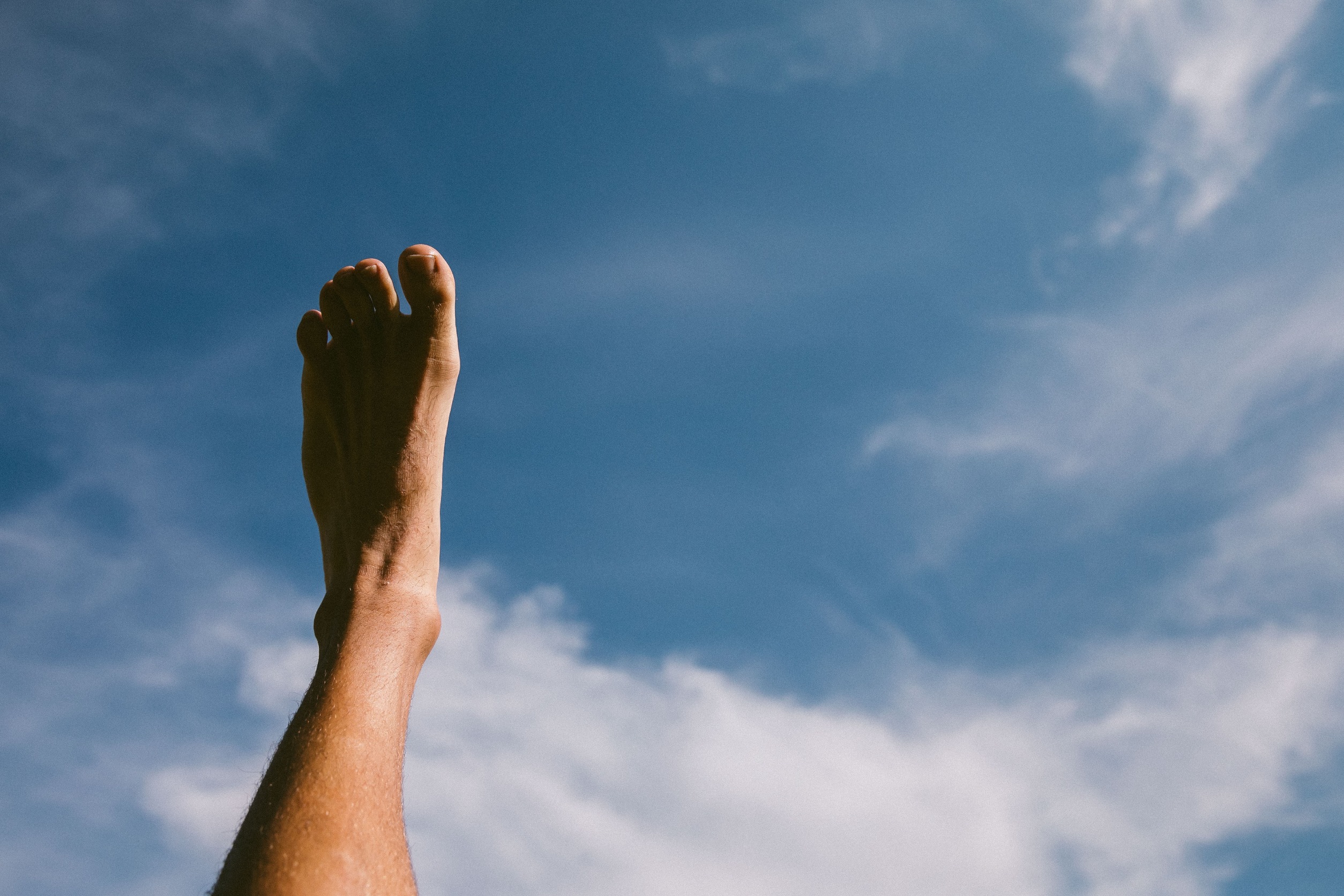BY THE OPTIMIST DAILY EDITORIAL TEAM
When thinking about the fundamentals of fitness and health, it’s easy to ignore something as seemingly minor as your toes. However, these little joints, particularly your big toe joints, play an important role in your overall health and mobility. Christynne Helfrich, PT, DPT, an Illinois-based physical therapist at Hinge Health, says the big toe joint is “totally underrated.” She emphasizes that our movements start from the ground up, with the big toe serving as a lever, bending back to propel us forward. If this joint does not function properly, it can cause a series of problems throughout the body.
The commonly overlooked role of the big toe
Most of us take our big toes for granted, but they truly deserve more attention. These not-so-little piggies are essential for daily tasks such as walking, jogging, and keeping balance. “Your big toe significantly impacts gait, allowing for efficient weight transfer during walking and running, contributing to a smoother, more stable stride,” explains Rachel Tavel, PT, DPT, CSCS, a physical therapist based in New York City.
This movement is also essential for maintaining your balance unsupported, which can help you avoid falls and accidents. Dr. Helfrich observes that when we close our eyes while standing, our big toes automatically grip the ground, a subtle move that helps to support our entire body. Everyday tasks like climbing stairs, kneeling, and reaching for objects on high shelves rely on the proper movement of your big toes. Even the most basic actions can be difficult if these joints are not mobile enough.
The total body effect of big toe mobility
A lack of motion in the big toe joint can cause immediate difficulties walking, standing, or climbing stairs, typically accompanied by pain. Dr. Tavel explains that a limited range of motion can also impair agility, making movements like sprinting or jumping more difficult and uncomfortable. But the difficulties do not end at your feet.
The consequences of big toe rigidity might spread throughout your body. Dr. Kaitlyn Laube Ward, a board-certified foot and ankle surgeon, explains that discomfort in one location frequently results in compensatory movement patterns, which can cause strain and injury in other joints and muscles. For example, if your big toe does not flex readily, you may instinctively change your gait to avoid a painful bend, which could lead to hip pain, knee strain, or back problems over time.
Dr. Michael Schumacher, a podiatrist at Mount Sinai’s Icahn School of Medicine, explains the domino effect in greater detail. “If your big toe is stiff, you might compensate by lifting your foot earlier than usual, which shifts stress to your hip, leading to tension and discomfort,” he says. These minor alterations can compound, causing a cascade of issues that impair your general mobility and quality of life.
Recognizing and assessing big toe health
Assessing your big toe joint’s range of motion is the first step in understanding its health. Dr. Ward recommends assessing both passive and active ranges of motion. Passive motion entails gently moving your big toe back toward your shin or down toward your heel with your hand, whereas active motion refers to how far the toe can travel in either direction using only your foot muscles. Pulling your big toe back should result in a 65-degree angle, and the reverse direction should be 30 to 45 degrees.
A weight-bearing test can also assist you in determining your big toe’s mobility. Dr. Ward suggests standing on one foot, elevating your heel off the ground but keeping your toes planted. The higher you can lift your heel without moving your toes, the more flexible your big toe joint is.
Ways to boost big toe mobility
Fortunately, there are various tactics you may employ to improve big toe mobility, many of which are simple to implement into your everyday routine. Walking on a regular basis is one of the most basic strategies for flexing your big toe and increasing mobility. Dr. Tavel recommends wearing supportive shoes with a big toe box to avoid squishing and keep your feet in normal alignment.
Stretching and mobility exercises can assist if your big toe is stiff or painful on occasion. These exercises are critical for promoting healthy movement patterns and avoiding compensatory stress on other joints. Dr. Schumacher recommends using a soft technique when moving your big toe, comparing it to “a gentle kind of movement, not like jamming a standard transmission.”
1. Gently wiggle your big toe up and down
Begin by sitting comfortably and holding your bare foot with one hand. To create space in the joint, gently hold your big toe and tug it away from the foot with your other hand. Slowly move the toe up and down the entire range of motion, pausing at the end of each range for a few seconds. Dr. Tavel recommends avoiding side-to-side movements because the big toe joint is not built for that type of motion.
2. Use a wall to bend deeper
Use a wall to get a deeper stretch without using your hands. Stand facing the wall, hands flat against it for balance. Press the bottom of your toes against the wall while keeping the rest of your foot on the ground. Bend your knees and lean against the wall to intensify the stretch. Hold this position for 20-30 seconds, then repeat several times.
3. Let gravity help stretch things out
To stretch your big toe in the opposite direction, Dr. Ward recommends utilizing a staircase. Stand with your toes on the edge of a step and gradually lower your heels, bringing them past the edge. This movement stretches the tips of your toes and calves. Hold for 15-30 seconds and repeat several times.
4. Give your big toe muscles a workout
Strengthening your toe muscles can also improve mobility. The towel scrunch is a simple workout in which you use your toes to pull a damp hand towel toward you. Alternatively, try picking up marbles with your toes and depositing them in a cup. These exercises are portable and do not require any special equipment, making them easy to fit into your everyday routine.
When to seek professional help
If you’re experiencing chronic pain, can’t wiggle your toes, or don’t see any progress after these exercises, you should see a podiatrist or physical therapist. A variety of reasons, including bunions, incorrect footwear, and nerve difficulties, can contribute to big toe rigidity, and an expert can help you determine the core cause.
Adding these simple but effective measures into your daily routine will help you maintain or enhance your big toe mobility, reduce the chance of compensation injuries, and keep your body moving smoothly. Remember even the tiniest joint can have a significant impact on your overall health and fitness.











